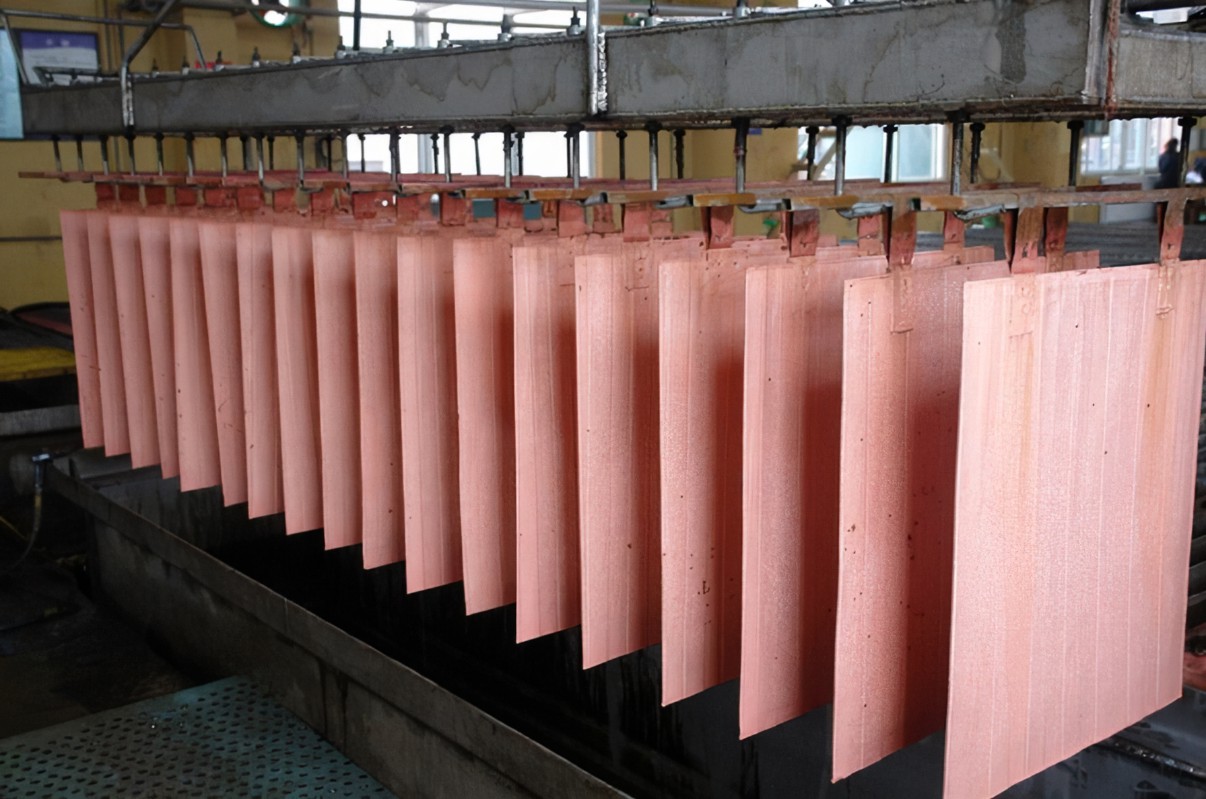NEWS&EVENTS
Home > News&Events > Company news > Process for producing cathode copper by electrolysis of copper anode plate
In the modern copper smelting industry, the conversion of copper anode plates into copper cathode plates is a critical and precise process, with the electrolysis stage being the core.
When the copper anode plates, after undergoing a series of preliminary processes such as melting and cooling, are precisely fed into the electrolysis equipment, a marvelous electrochemical journey begins. The electrolysis equipment's complex and scientific internal structure provides an ideal environment for the migration and deposition of copper ions.

Under the powerful action of direct current, the electrolysis process officially begins. The copper atoms in the anode plates lose electrons, undergoing oxidation reactions and transforming into copper ions (Cu²⁺). As if drawn by an invisible force, these copper ions escape the anode plates and enter the "big stage" of the electrolyte. The electrolyte, rich in various ions, provides a suitable medium for the migration of copper ions.
Meanwhile, at the cathode, the situation is quite different. Copper ions in the solution gain electrons, undergoing a reduction reaction, and steadily deposit on the cathode surface. Over time, the copper atoms become densely packed and gradually accumulate to form a bright, dense cathode copper. This process is precise and orderly, strictly adhering to the principles of electrochemistry. The entire electrolysis process requires extremely stringent conditions. Even the slightest variation in temperature, current density, and electrolyte composition can affect the quality of the cathode copper. Precise control of these parameters ensures efficient and stable deposition of copper ions at the cathode, ultimately yielding high-purity cathode copper.
This process not only achieves efficient copper purification but also drives the copper smelting industry toward high precision and high quality, providing a solid foundation for numerous industries that rely on high-purity copper.